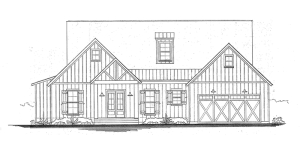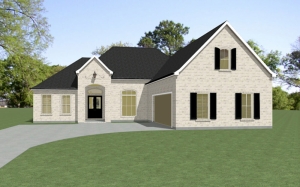Red Dress Run, August 8, 2020
Held on the second Saturday every August in New Orleans.
Red Dress Run
2300 N Peters Street
New Orleans, LA 70117
August 8, 2020
11:30AM
Click Here for More Information.

2300 N Peters Street
New Orleans, LA 70117
August 8, 2020
11:30AM
Click Here for More Information.

200 – 1000 Block of Royal Street
New Orleans, LA 70130
Canceled
Click Here for More Information.
 In the last week of June, The Plaquemines Parish School District released their plans for the school year during the pandemic. The majority of the Parish’s schools will offer both virtual and brick and mortar classes.
In the last week of June, The Plaquemines Parish School District released their plans for the school year during the pandemic. The majority of the Parish’s schools will offer both virtual and brick and mortar classes.
Belle Chasse High School will only offer virtual learning for the first nine weeks of the school year. The 7-12 graders that make up the 900 students at the high school would have a hard time physical distancing. Superintendent Denis Rousselle explains that they “looked at all kinds of scenarios” but it was just too challenging. The teachers at Belle Chasse High school are all currently being trained in Google Classroom.
“The kids will have to complete assignments and they will be graded as if they were traditional assignments,” Kenny Petkovich, Director of Secondary Education in Plaquemines said.
Plaquemines Parish schools sent out a survey at the beginning of July asking parents which path they will take for their students’ learning. The district asked in the survey which learning option they would choose for their students either traditional or virtual learning.
“I’m just very grateful that at least Plaquemines Parish has a plan,” said Jaime Sauer who has an 8th, 6th, and 3rd grader in Plaquemines Parish schools.
The school district explained the plans for the upcoming school year in a letter sent out to the district’s parents. The district will follow the LDE and LDH guidelines. If the state reverts to Phase 1, all students in the district will participate in online/virtual learning. If Louisiana is in Phase 2 or 3, Belle Chasse High School will remain online/virtual while remaining schools will offer both virtual and brick and mortar options.
“The plan of today is to try to get as many children as we can in the brick and mortar schools safely,” Rousselle said.
Click Here For the Source of the Information.
 Terrytown located in Jefferson Parish will now have a revitalization program thanks to the Jefferson Parish Economic Development Commission, in coordination with Jefferson Parish President Cynthia Lee Sheng, Councilman-at-Large Ricky Templet and other development partners. In fact, the project already has its first model home currently under construction.
Terrytown located in Jefferson Parish will now have a revitalization program thanks to the Jefferson Parish Economic Development Commission, in coordination with Jefferson Parish President Cynthia Lee Sheng, Councilman-at-Large Ricky Templet and other development partners. In fact, the project already has its first model home currently under construction.
The home, located at 522 Farmington Place, will be built by local Hyman Bartolo Contractors and is set to be completed by the end of the year. This is the first home being built under the Jefferson Parish Neighborhood Revitalization Model Home Pilot Program in Terrytown. It will be designed following the same architectural style found in the neighborhood that was developed by Paul Kapelow in the late 50’s and early 60’s.
“This model home will have a positive economic impact on our community,” said JEDCO President and CEO Jerry Bologna.
Tulane School of Architecture Albert & Tina Small Center for Collaborative Design has developed guidelines to follow which are patterned after mid-century modern. They took their inspiration from historical and existing architectural styles found throughout Terrytown.
The overall project will be overseen by NOEL and will be guided by the Terrytown model home pilot program. The New Orleans Metropolitan Association of Realtors, the Home Builders Association of Greater New Orleans, New Orleans Educational League for the Construction Industry and the Jefferson Parish Finance Authority will also participate in the project.
The Jefferson Parish Neighborhood Revitalization Model Home Pilot Program’s purpose is to ” provide a suite of tools, resources and recommendations that will improve existing housing stock, encourage the development of new desirable housing units and improve the neighborhood amenities and infrastructure in Terrytown. The plan was created to stimulate investment in housing stock that complements surrounding architectural styles while featuring contemporary interior and exterior designs in demand by today’s homebuyers.”
“When a prospective business considers a community, they make decisions based on a number of factors, including quality of life, education and housing. Improving our housing stock and addressing and providing a variety of housing options will allow our community to remain economically competitive and attractive. Our innovative approach to neighborhood advancement, along with our dynamic partnerships, are some of the many reasons why Jefferson Parish continues to be a destination for business,” said Bologna.
Click Here For the Source of the Information.
 When one thinks of New Orleans, they immediately think Cajun but surprisingly the first Cajun settlement was west of the metropolis in Westwego. Westwego is the location where greater New Orleans more or less skirts the Acadian Triangle which consists of “22 contiguous parishes where most Cajuns live.” Cajuns have lived and thrived in this area for close to two hundred years.
When one thinks of New Orleans, they immediately think Cajun but surprisingly the first Cajun settlement was west of the metropolis in Westwego. Westwego is the location where greater New Orleans more or less skirts the Acadian Triangle which consists of “22 contiguous parishes where most Cajuns live.” Cajuns have lived and thrived in this area for close to two hundred years.
Cajuns are a French-Canadian ethnic group that settled in Louisiana after they were kicked out of the Acadie region in Novia Scotia by the English during the French and Indian War. Spanish leaders began to offer Acadiens land grants in the area west of New Orleans. The group was formed and would become known as the Côte de Acadiens. Later the group would be reformed as Cajuns which is the term Louisianians use interchangeably Acadians.
The Company Canal (also known as the Cajon Pipeline) was the way coastal resources such as oysters, crabs, shrimp, fish and game as well as timber, moss, shells, and other raw materials reached inland. Later, railroads also became a vehicle for coastal goods. The New Orleans, Mobile and Texas Railroad connected north Texas with Mobile through tracks running on the banks of New Orleans and train ferries crossing the Mississippi River. The railroad company deemed the passageway “West-We-Go and this is where the community of Westwego got its name.
Westwego would become greater New Orleans’ cannery row because of its canals, railroads, and coastal-savvy denizens. Sala Avenue and 2nd Street soon became the hub of the seafood processing industry. Durac Terrebonne’s Fishermen’s Exchange was housed here where there was a crab meat processor, a shrimp factory, two ice manufacturers, a cold storage unit, and a seafood retailer.
Residents are proud of their French heritage. In fact, according to the 2000 Census, the majority of Westwego residents claimed “French” when filling out the Census. Cajun was how residents responded to the 2013-2017 American Community Survey as their ancestry. Cajun French is very much a part of Westwego and will always be the area’s original connection to the Côte de Acadiens.
Click Here For the Source of the Information.